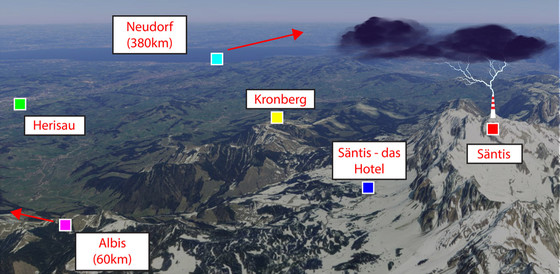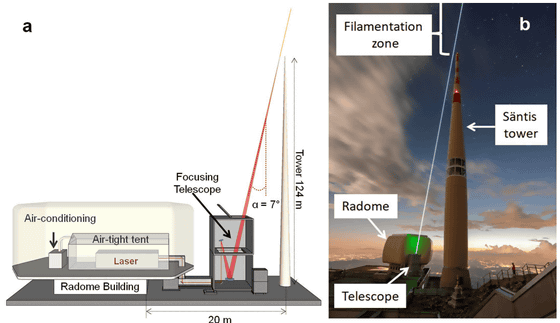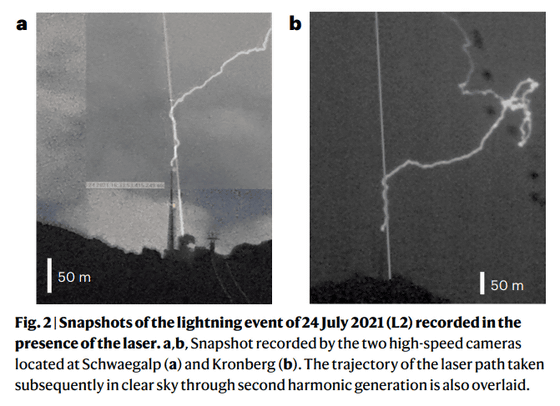Succeeded in inducing natural lightning with a high-power laser of 1000 pulses per second

A research team at the University of Geneva, Switzerland announced that it succeeded in inducing naturally occurring lightning strikes using a 1 kHz high-power pulsed laser. This research project has been underway for more than 20 years, and the experimental results demonstrate that laser weather control is possible.
Laser-guided lightning | Nature Photonics
This rapid-fire laser diverts lightning strikes
https://doi.org/10.1038/d41586-023-00080-7
Scientists steer lightning bolts with lasers for the first time | Physics | The Guardian
https://www.theguardian.com/science/2023/jan/16/scientists-steer-lightning-bolts-with-lasers-for-the-first-time
Lightning is an electric discharge phenomenon that occurs when ice grains collide with each other in the atmosphere and large-scale charge separation occurs. Therefore, when a high-power laser is fired into the air, a highly conductive plasma is generated, enabling ``laser-induced lightning,'' which guides lightning to the trajectory of the laser.
Since lightning causes power line accidents and wildfires, laser-induced lightning technology that can control lightning has been researched since the 1970s. However, although there have been reports of demonstration of laser-induced lightning against very small lightning generated in experimental facilities, there has been no successful example of actually controlling naturally occurring lightning with a laser.
Jean-Pierre Wolff, a physicist at the University of Geneva, has been researching laser-induced lightning for more than 20 years and is conducting experiments at the summit of Mount Sentis at an altitude of 2500 m in Switzerland. Since there is a radio tower that strikes lightning more than 100 times a year on this Mount Sentis, it is perfect for experiments on whether naturally occurring lightning can be controlled with a laser.

In this experiment, a high-power pulse laser with a pulse frequency of 1 kHz, that is, 500 mJ and a wavelength of 1030 nm emitted at 1000 shots per second was used. According to the research team, it seems that the frequency of the pulsed laser used in the experiment so far was about a few Hz at most, but this time a high-power laser emitting device that costs 2 million euros (about 280 million yen) is sent to Mt. Sentis By installing it next to the radio tower on the top of the mountain, it was possible to emit a high-output pulse laser of 1000 Hz.

The research team experienced a total of 6 hours of thunderstorms during more than 10 weeks of observation, and confirmed 4 lightning strikes. The picture below is the moment when lightning was actually guided to the radio tower with a high-power pulse laser.

By applying this technology, it becomes possible to protect important facilities from lightning strikes and guide lightning strikes to safe places to prevent wildfires from occurring. In this experiment, we succeeded in guiding naturally occurring lightning with a laser, but it was based on a huge and expensive laser facility. The research team aims to make this laser-induced lightning system cheaper and more compact to make it a practical technology.
Related Posts:
in Science, Posted by log1i_yk







